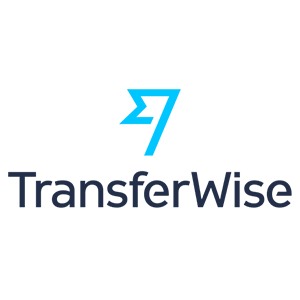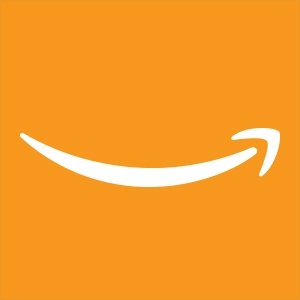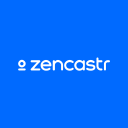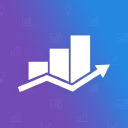
On Starting An Alternative Investment Community
My name is Stefan von Imhof and I founded Alternative Assets.
Alternative Assets is a newsletter focused on alternatives to the stock market. It’s written by my partner, Wyatt, and I, along with a team of contributors. We perform in-depth research and deep analysis across dozens of asset classes to find interesting investment opportunities ranging from sports cards, to collectibles, to sneakers, to video games, to NFTs, to websites, and more.
Everyone knows about the stock market, and maybe they own some real estate and a little bit of Bitcoin, but there’s a whole world of investment opportunities out there that is just under-discussed, and that’s what the Alternative Assets newsletter is all about.
We explore and demystify the world of alternative investments through a newsletter and a podcast. We’re not a link aggregator that summarizes what you’ve already heard elsewhere. We do original deep-dive explorations into dozens of investable asset classes. Each week, we dive into something different. Last week it was LEGOs; this week it was investing in digital horses with ZED RUN. We currently have 5,000 members and $6,000 in monthly revenue. So we are off to a great start.

What's your backstory and how did you come up with the idea?
The story of how this all got started goes back to last year. I live in Melbourne, Australia and Melbourne were in the middle of a very strict, very long lockdown that lasted from June through September of 2020. At my full-time job, I’m the head of product at Flippa.com, but for 3 months I had nothing better to do on the weekends.
You’re going to have to spend money, and you’re going to make mistakes. It’s trial and error, but you have to find something, or your product won’t ever take off.
I’m always thinking and reading about alternative investment opportunities such as websites, social media accounts, and stuff like that. And I figured since I’m already thinking and talking about this stuff all day long, I would start writing about it as well.
At the time, I had a small newsletter about website investing, which I was sending out to friends and family and stuff like that. But I noticed something interesting was happening. I noticed that there was this whole world of alternative investment opportunities that were opening up — stuff like classic cars, artwork, and wine, watches, and whisky, and all sorts of other fun stuff. And so, I kind of thought that there might be a good opportunity to kind of marry these worlds together a little bit – marry the more traditional alts, stuff like gold and stamps and currencies, with this new class of alts that to me was just incredibly exciting. And no one else was doing it as far as I could tell, so I started a Substack newsletter called Alternative Assets, and I started writing.
I knew I was onto something because within a few issues just on Substack I was getting a lot of great responses from people. Folks were responding to the emails and saying, “You know, I love this stuff. Great stuff. Great job. Keep it up!” And I knew this was different from other business ideas I had because;
1) The project was so closely related to my full-time job, so I was already immersed in this world
2) The project felt different because it was based on stuff I love.
Other side projects I’ve had, you know, I wouldn’t say I’ve been in love with them. Some of them have been fun, some of them great, but this is something I just truly love. Yes, this is a business now, but I mostly do it for myself. To learn. I love exploring these new & exciting markets, and teaching others what I find out.

Take us through the process of designing, prototyping, and manufacturing your first product.
The easy thing about starting a Substack newsletter is how frictionless it is. There isn’t a whole lot that you need to do. You can pretty much just claim your Substack URL and just start writing. They make the process of creation so super easy. I later got off of Substack and switched to ConvertKit, but in terms of getting started, you couldn’t ask for an easier way to get started than using Substack. So, there was nothing to design, nothing to manufacture, nothing to create except pure content.
The only thing I designed was the logo, and to do this I spent maybe 10-15 minutes in Canva. I found a few cool fonts that I liked, and for the icon, it looks like it’s a slice of a circle, a slice of a pie, but it’s pretty deliberate. It’s exactly 40% of the pie, and the reason it’s 40% is that experts suggest you should have between 20-40% of your portfolio in alternative assets. But, most retail investors only have like 1 or 2 percent of their portfolio in alts. Me? I prefer to max out my allocation. So that’s why I chose that exact slice of the pie for the logo.
When all is said and done, it was easy to get started, and I have Substack to thank for that. But after a few months, I realized Substack wasn’t cutting it. There were two main problems with Substack:
- Substack owned all of my content. I spent all this time writing, and lots of my issues were starting to rank well in Google! But Substack was getting all the traffic, not me. I understand the long-term importance of having strong SEO, and giving up this link juice to a third-party company wasn’t going to work.
- Payment plans weren’t robust enough for what we needed. Substack offered some very simple payment plans and nice Stripe integration. But the premium plan I wanted to bring to market didn’t fit their mold at all.
So I built my site in Wordpress to host all of the content, and created an SEO-friendly structure that would work well in the long term. I switched to ConvertKit for sending the email newsletter and weaved in a premium plan using Memberful.

The SEO strategy worked. Our monthly organic traffic has grown tremendously since doing this.

Describe the process of launching the business.
It’s important to know that I didn’t have a product “launch” in any real sense of the word. And the reason I didn’t have a product launch when I started is that I didn’t have a product. As a product manager, we talk a lot about product-market fit, and I’ve often thought about how that applies to a newsletter. Well, to me, when I started writing Alternative Assets, it felt like a newsletter-market fit. There wasn’t a product, so to speak, at least not yet, but it just clicked. The topics were resonating with people, I was gaining subscribers organically, I was doing what I love, and it just kind of all fit and clicked into place.
After about 5 or 6 months, I noticed that there were a couple of really big fans of the newsletter, one of whom was Wyatt Cavalier. Wyatt had his Substack newsletter called “Fractional”, which was covering some similar and tangential themes. I loved his newsletter, and I know he loved mine. We started chatting on Twitter, and I called him up one day and asked if he wanted to join forces. I said, “Look, I love your newsletter. I don’t want to compete with you. I’d rather just work together. What do you say we team up, create a real product, take this thing to the next level?”
He agreed. We decided to join forces, and have been co-founders ever since.
Since launch, what has worked to attract and retain customers?
When Wyatt and I joined forces, we knew we wanted to become more than just a newsletter. We had big plans for this thing, and the first step was to develop a SaaS product. In each of my weekly newsletter issues, I would take a single alternative asset class and do a deep dive into it for my readers; understand the markets, who are the players involved, the economics, etc. We thought we could turn that insight into a subscription product, where we would give even deeper and richer analytics, insights, and recommendations for premium members.
And so, Alternative Assets Insider was born. This subscription product gives you deep analysis and in-depth insights into 9 Alternative Assets Classes (now up to 13). In addition to our regular newsletter, we would give Insiders access to a much deeper, richer set of data and analytics on each alternative investment opportunity.
Before creating Insider, I hadn’t done a ton of advertising. But one thing that I noticed that was working was sponsoring other people’s newsletters. So, I got really into it and started to focus on newsletter arbitrage opportunities. I created a spreadsheet that looked at the audience size and price for dozens of different newsletters that we could potentially advertise in. This gave us a high-level overview of the average cost to reach each subscriber.

However, with newsletters it’s about more than just how many subscribers a newsletter has, it’s about the open rates, and more importantly the click-through rates. So I started to analyze sponsorship opportunities through the lens of what it costs per open or what it costs per click. Over time, I learned which newsletters were undervaluing their inventory, and I started to advertise like crazy in those newsletters.
As far as I could tell, there wasn’t any public data on this stuff. So I had the massive spreadsheet that I would use to find undervalued newsletter sponsorship opportunities. And over time I was able to gain thousands of subscribers this way while keeping our CAC under $6.00 per member.

The other thing that we did to grow the newsletter is we acquired other newsletters. This is something I’ve written about, and it’s a very interesting topic. Being the head of product at Flippa, I live and breathe acquisitions; buying websites, buying and selling websites and social media accounts, etc. Well newsletters themselves are an alternative asset. And as it turns out, you can find newsletters that are for sale on the public markets and private markets and make reasonable offers to acquire those newsletters.
And so, I did that. The way I did that was by using a product that was developed by Jakob Greenfeld, called ‘Newsletter Spy’. Jakob scraped the Substack data for 20,000 Substack newsletters, pulling in everything from the number of readers each one had, to when their last update was, to what their niche was, to if they were paid or free. He had created a tremendously valuable database.
So, I bought this database, and I looked through the database for good acquisition opportunities. I looked for newsletters that were in the financial or technology categories where they had at least a couple hundred subscribers but hadn’t been updated in at least 5 months. I figured if you’re taking 5 months off of a newsletter, it’s probably dormant/dead to you. So, I figured that was right for an acquisition. And so, I whittled this list down to a target of about 60 or 70 newsletters. I reached out to them and just said, “Look, I’m looking to buy newsletters. Would you be willing to sell? I know you haven’t touched it in a while.” I was surprised at how receptive people were. I thought people were just going to say, “Leave me alone.” But most people were like, “Yeah. I’d be willing to sell. What are you offering?”
It’s a tough process of negotiation back and forth, but I was able to buy a couple of newsletters this way for pennies on the dollar. These newsletter acquisitions were a terrific way to grow the base at the time. But there’s more. I was so impressed with Newsletter Spy that I ended up getting to know the founder Jakob pretty well. And I’m proud and happy to say that after many conversations and lots of chatting with Jakob, he is now part of the team here at Alternative Assets!
How are you doing today and what does the future look like?
So today our future is very bright, and our operations have expanded. We have published 473 issues across two dozen asset classes, and have brought on some expert contributors to join the team.
We are currently at about 5,000 members, earning about $6,000 per month, or about $15 per member per year. Because we’ve introduced new revenue sources, this number is on the upswing and means each member pays for themselves after 5 months.

We make money in three ways. We have our aforementioned SaaS subscription, called Alternative Assets Insider. We also sell a lot of sponsorships ourselves. Folks have come to us looking to advertise in our newsletter, and we have gladly obliged. So, we have lots of demand for advertising in our newsletter, and managing it gets a little tricky sometimes.


Last but not the least, we have a due diligence service, which is a personalized service where we analyze and give recommendations and advice on very specific assets that people want to purchase. This could be a website that someone is looking to buy, it could be a set of Pokemon cards on eBay. Our community has asked if we can help them analyze deals. So we formalized and productized our analysis.
In terms of our plans to expand, we do have some big plans. I can’t tell you exactly what our plans are, but there are some very very big things in the works. We feel that we have a really strong community, a really strong unit economics, and we look forward to what the rest of this year brings. Stay tuned.
Through starting the business, have you learned anything particularly helpful or advantageous?
I think timing has played a pretty large role in our success. I feel like I was fairly early to a trend that started to kind of get big after I had started writing about it, and have become a leading authority and voice on the subject. I think I’ve helped move the conversation forward, and that feels good.
But earlier I talked about newsletter-market fit, and I think part of that is just kind of nailing the zeitgeist around this stuff. Having solid timing around this enormous, huge alternative investment movement that’s happening all around us. We were early to this movement, and continue to push the conversation forward here, which has continued to serve us well.
In terms of other good decisions, I've made I think one of the best decisions I’ve made is partnering with someone that I enjoy working with early. I never planned on this being a “real business”. I thought this would just be a solo side hustle, and I quickly realized that there’s so much to do and there was no way I was going to be able to do it myself. And it was tricky because, you know, I had never met my partner before. We still haven’t met in person to this day – I live in Australia; he lives in Spain. So, it’s a little nerve-racking, a little tricky, but we’ve grown to admire each other, and we work well together, we complement each other’s skills well. So I think taking on a partner early was a really wise decision.
In terms of things that have been tricky, I don’t think there are any real poor decisions we’ve made, although I do think we priced our SaaS subscription service too high to start. We priced it at $45 per month or $450 per year, and it was a little bit tricky to justify that pricing. That pricing may be coming down soon, and that’s ultimately OK. Pricing is a very tricky thing to get right, and although it goes against conventional wisdom, I’d actually rather start high and then be forced to lower it, than start too low and then have to raise it.
What platform/tools do you use for your business?
The beautiful thing about running a newsletter business is how simple your tech stack can be. Our stack is very straightforward. Our site is hosted on WordPress, we use ConvertKit for sending our emails, and we use Memberful integration to handle our subscriptions and membership access, which integrates with both ConvertKit and WordPress.
It is so simple. WordPress is just a phenomenal CMS. I know there’s a lot of other fancy no-code solutions out there, but to me, WordPress is just the original CMS, and it’s the most popular CMS in the world by far and for a good reason – it just works.
I also am a huge fan of using Google Docs. Most of our data analysis is done in Google Docs and Airtable, and a lot of our backend processes run through Airtable via a Python script as well.
So it’s a very simple stack, and I like the simplicity of it. It makes my life a lot easier.
What have been the most influential books, podcasts, or other resources?
I’m a fan of both trends.co and trends.vc. Both are examples of communities done well. In terms of podcasts, I like the My First Million podcast with Shaan Puri and Sam Parr from The Hustle. I also listen to a lot of Lex Friedman because he thinks outside the box and isn’t afraid to be himself, and Jim O’Shaughnessy from Infinite Loops is terrific as well.
Advice for other entrepreneurs who want to get started or are just starting out?
I think there are two phases to understanding if you have something really special. The first is, as we know, product-market fit, which in my case was newsletter-market fit. There’s been a ton written about this, and there’s not a whole lot more new to say about it. It’s tough to define, but “you know it when you see it.”
However, one thing I think entrepreneurs neglect is marketing fit. I think that a lot of entrepreneurs forget how important marketing is — especially technical entrepreneurs. They think “if you build it, they will come”. And that’s just not quite true. Instead of neglecting marketing, entrepreneurs need to find acquisition channels that work for them. You’re going to have to spend money, and you’re going to make mistakes. It’s trial and error, but you have to find something, or your product won’t ever take off. Much like product-market fit, you should have at least one channel where “it just works.” You know it when you see it. The numbers are working, the unit economics are good. It just works.
For us, we’re lucky enough to have success sponsoring other newsletters. That’s our primary marketing channel. Whatever it is you’re building, you’ve got to find a marketing channel that just works.
Where can we go to learn more?
If you have any questions or comments, drop a comment below!

Download the report and join our email newsletter packed with business ideas and money-making opportunities, backed by real-life case studies.

Download the report and join our email newsletter packed with business ideas and money-making opportunities, backed by real-life case studies.

Download the report and join our email newsletter packed with business ideas and money-making opportunities, backed by real-life case studies.

Download the report and join our email newsletter packed with business ideas and money-making opportunities, backed by real-life case studies.

Download the report and join our email newsletter packed with business ideas and money-making opportunities, backed by real-life case studies.

Download the report and join our email newsletter packed with business ideas and money-making opportunities, backed by real-life case studies.

Download the report and join our email newsletter packed with business ideas and money-making opportunities, backed by real-life case studies.

Download the report and join our email newsletter packed with business ideas and money-making opportunities, backed by real-life case studies.






































